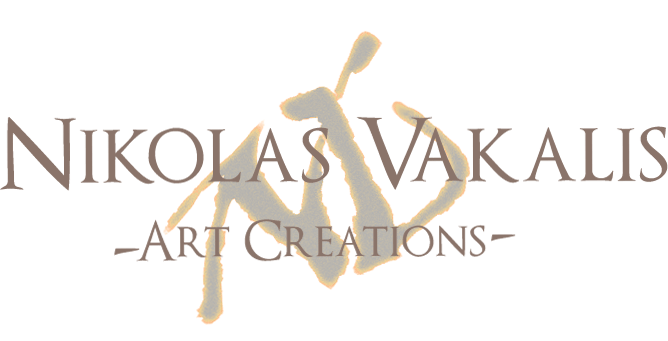
This trompe l'oeil has been executed in 1999, in the summer dining room of a house located on a hill of a wonderful Athen’s suburb.
It’s a ̴ 7 m2 ( ̴ 23,00 ft) mural painting executed on dry plaster, by mixed technique: lime tempera
for the background colors and acrylic tempera for the details.
The basic inspiration comes from the astonishing sea view one could have from the house: Then, some Renaissance-like themes, such as
several still life compositions in the foreground, as well as a "capriccio" - in older English works often anglicized as "caprice",
that means an architectural fantasy, placing together buildings, archaeological remains
and other architectural elements in fictional and often fantastical combinations.
So, based on this genre, on the right of the background I conceived an imaginary ancient Athens,
playing with different monuments all combined together to form a whole of an ancient city...
Some other objects are directly inspired either by the classical Greek antiquity - e.g. the bronze staue of the Ephebe of Marathon, 340-330 BCE, school of Praxiteles - or by "Wunderkammer"'s objects - e.g. the Nautilus, that is a Nautilus Pompilius shell mounted over a gold base.
The Wunderkammer is one of my favorite subjects - aka Cabinet of Wonder or Cabinet of Curiosities or Wonder-Room.
The Wunderkammers were encyclopedic collections of objects starting from the mid 16th century.
Modern terminology would categorize the objects included as belonging to natural history, geology, ethnography,
archaeology, religious or historical relics, works of art - including cabinet paintings - and antiquities.
The Cabinets of Wonder conveyed symbolically the patron's control of the world
through its indoor, microscopic reproduction that can be
defined by three Latin words:
Mirabilia, Naturalia et
Artificialia.












The Nautilus Pompilius shell mounted over a gold base, a typical object of the Cabinets of Wonder...







